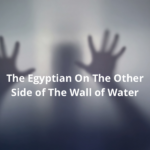Rav Hirsch: Prayer II
The middle blessings of the Amidah centers around the middle group of the Tamid – Daily Offering – procedure, the Haktarat Eivarim – the preparation and offering of the inner parts of the offering. This middle group of the offering procedures deals with parts of the body, the meaning of most of which leaves little room for doubt, and equally so the meaning of those middle blessings is also quite clear.
Concerning the parts, as well as the order in which they are to be brought to the Altar, Tamid III & IV, and Yoma 25a-b, are sources of reference. Regarding the division of the animal into fixed groups of parts there are no divergent opinions. But regarding the order in which these groups of the parts were brought we find five different opinions. The one generally accepted both in Tamid and Yoma is the following:
1. First: The head with the fatty layer which covers the entrails like a cloth, together with the right hind-leg and the two testes – constitute the first group.
2. Second: The two forelegs.
3. Third: The lower backbone with the corresponding two ribs on either side, together with the rump and the extension of the liver, the two kidneys, and the left hind-leg.
4. Fourth: The breast and the throat with the two upper ribs on either side and the trachea, the heart and the lungs.
5. Fifth: The two flanks with the backbone and two ribs on either side above and below, the liver with the right flank and the spleen with the left.
6. Sixth: The stomach and intestines together with the lower foot joints.
If we examinie the first group, the head immediately presents itself as the organ of intellectual and mental perception. What one is offering is the dedication of our Da’at, just as Dei’ah, knowledge, is also the subject of the first of our middle blessings.
But it is not just knowledge as a mere abstract function of the brain, but also as its directing and guiding of our spiritual and physical aims of life.
The physical needs of our body, so central to our cerebral activity, are represented by the fatty layer, the reserve saved-up stores of the body.
Our “way through life” and our posterity are represented by the right leg and the two testes.
In the first of the middle blessings, knowledge is depicted not merely as a theoretical abstract knowledge, but also as practical knowledge in its application: Binah – to discern, and Haskeil – to apply wisdom are the practical correlates of acquired knowledge – Dei’ah.
The meaning and importance of the first group as offering our “head,” our knowledge, to God, is further enhance by the Hatavat Chameish Neirot – preparation of five of the Menorah candles – which immediately preceded the severing of the head, or, according to the Rabbanan, Hatavat Sh’tei Neirot – Preparation of two of the Menorah candles, which took place just before giving it over to the fire on the Altar, thereby connecting the offering of the head with the Menorah, the symbol of spirit and clarity.





